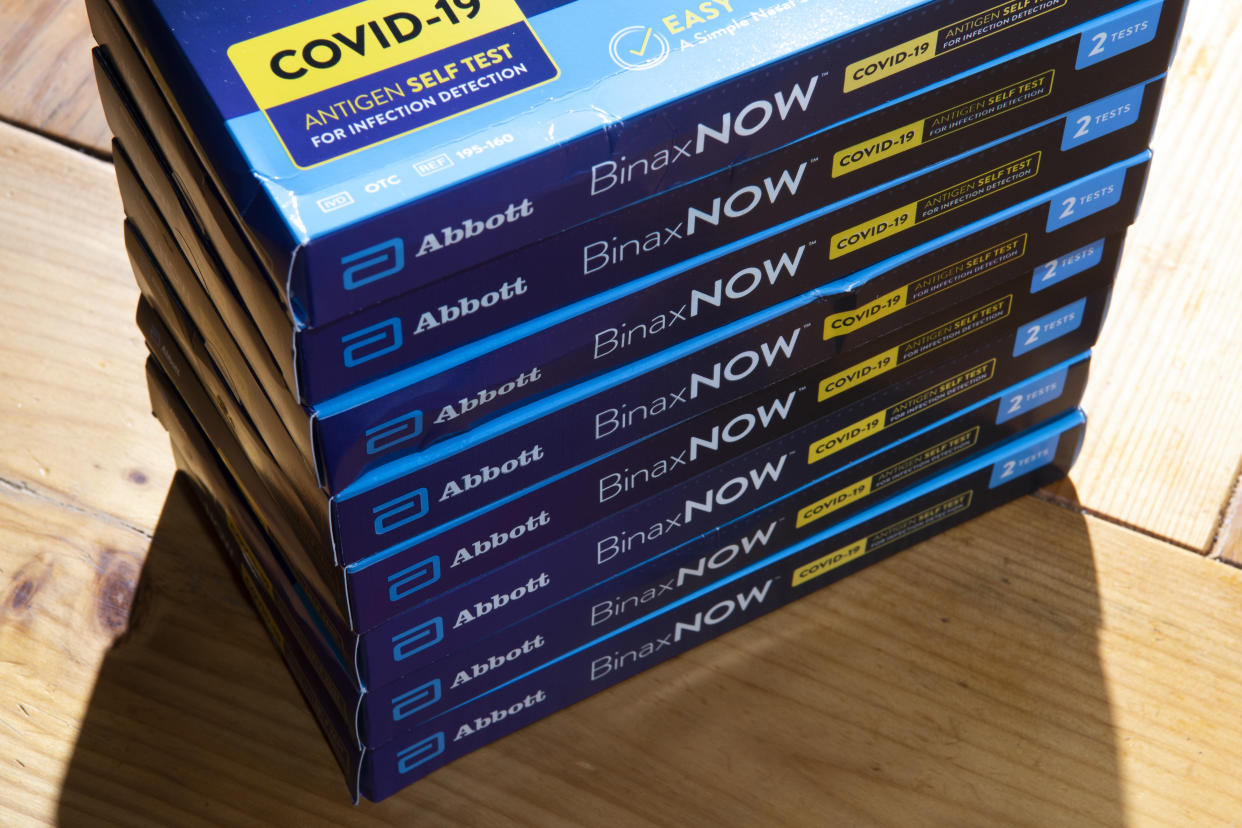COVID testing isn't totally free anymore. How to access PCR, rapid tests

It’s that time again: COVID-19 cases are rising. And unlike with every previous wave, the federal public health emergency, which made tools for controlling the coronavirus widely available (and mostly free), is no longer in effect.
“When the public health emergency ended [on May 11], private insurers were no longer going to be required to cover tests,” Dr. Abraar Karan, an infectious disease researcher at Stanford University, tells Yahoo Life. “But there are still ways for people to get free tests.”
Here’s what you need to know about when to get tested, which test to use, how to get a test for free and if old tests are OK to use.
When to get tested
As with previous variants, if you present with symptoms, test immediately. If you were exposed to someone with COVID, the Centers for Disease Control and Prevention advises testing at least five full days after your exposure.
The most common symptoms of the EG.5 subvariant, which now accounts for a majority of new cases, include:
Fatigue.
Headache.
Runny nose.
Sneezing.
Sore throat.
Dry cough.
Which test to take
Polymerase chain reaction (PCR) tests administered by health care providers are highly accurate, but they typically take 24 to 72 hours to get results.
Antigen tests, also known as rapid tests, can be self-administered at home and they give you results in 15 minutes, but they are less sensitive and are much more likely to produce a false negative.
How toget a test for free
What you can get will depend on your health insurance and where you live.
If you have traditional Medicare Part B, which provides medical coverage to Americans age 65 and over who enroll and pay a monthly premium, you still can get a PCR test and your insurance will fully cover it without copayments and regardless of whether you’ve met your annual deductible, according to the Centers for Medicare & Medicaid Services. However, you cannot get an over-the-counter rapid test from a drugstore for free any longer.
If you have Medicaid, which provides coverage to people with less than a certain income — the threshold varies by state — testing is covered without any cost sharing until Sept. 30, 2024, by federal mandate. After that, it will be up to states whether to continue that coverage. This includes over-the-counter tests, but some states may require a prescription. If you go to the pharmacy and ask for a rapid test and provide your insurance information, they will be able to tell you if there are prescription requirements.
If you have private health insurance through your employer, a spouse or parent’s employer or through a state exchange, your insurer is still required to cover testing performed by a medical professional, but it may be subject to the same deductible or copay costs as any other test, and insurers may limit the number of tests covered or require prior authorization. At-home tests are no longer required to be covered, and “although some health plans may continue to provide this coverage, most no longer do so,” according to Verywell Health. Large insurers, including UnitedHealthcare, Cigna and Aetna, stopped covering at-home tests. Karan says to call your insurer to find out what tests are still covered by your insurance if you are unsure. Some states still require private insurers to cover COVID-19 testing. California, for example, is maintaining the requirement until Nov. 11, 2023.
If you have Medicare Advantage, meaning you have chosen to get your Medicare benefits through a private insurer, your insurance may still cover at-home tests. However, you may face copays or deductibles for PCR tests.
If you are uninsured, you are no longer guaranteed free tests. However, there are still free tests available from when the federal government stocked up on them during the pandemic. “The government’s not purchasing more tests, but they haven’t completely run out, such that there’s not going to be any free tests left,” Karan says.
You can go to the CDC’s testing locator, put in your ZIP code and find a participating provider with a supply of free tests, such as a drugstore or laboratory. Quest Diagnostics, for example, lets you schedule a free PCR test appointment online. If the location nearest you, which may be a drugstore like CVS, doesn’t have online booking, you may want to call to make sure the test is still available, Karan advises.
Can you use an expired test?
Many Americans who received free at-home tests or bought them earlier in the pandemic may be wondering if it is safe to use a recently expired test. The Food and Drug Administration has revised expiration dates for some tests to extend them by several months, so you should check the agency’s guidance to see if the test you have is one of them. Follow this link, find your test’s name, click on Extended Expiration Date, and check the lot number on your box to see the new expiration date for your test.
